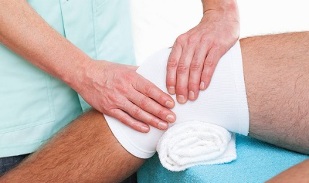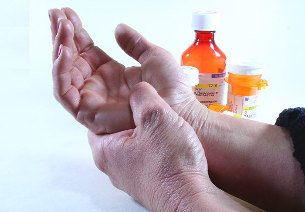The most common joint pathologies are arthritis and osteoarthritis. There are many differences between the two diseases on which the outcome of the disease largely depends. Proper definition of the disease by a medical professional is the key to effective treatment for complete recovery of the affected joints. Under the influence of age-related changes, everyone is at risk of pathological changes in the joints. Joints that are exposed to increasing stress throughout life are particularly affected. Diseases can be a direct cause of joint changes. In order to prevent undesirable consequences from joint diseases, it is necessary to prevent the development of the disease by following preventive and therapeutic measures.
The main differences between arthritis and osteoarthritis
Common pathologies: arthritis and osteoarthritis adversely affect the patient's quality of life. The disease-causing process in the joint causes pain and limited mobility. Both diseases cause destructive changes in the structure of the joints, but differ in the origin and course of the disease.
Arthritis, compared to osteoarthritis, is an acute or chronic inflammatory pathology of the joints that can occur with infections or diseases of an autoimmune nature, becoming a complication after injury, and also occurring with allergic reactions.

Single and multiple joints are affected. In addition, the inflammatory process spreads to all parts of the body, involving the internal organs in the process.
Osteoarthritis is a process of cartilage modification that causes joint loss, such as arthritis, to a complete loss of mobility. The patient develops a pathological process, taking into account age-related changes in the joint tissues, aggravated by overweight, metabolic diseases and pathologies of the endocrine system.
The causes of arthritis and osteoarthritis are significantly different. The only unifying factor is the similarity of some symptoms and the tragic consequences of untreated forms.
Arthritis Triggers:
- development of inflammation in the joint tissues of the knee after various traumas;
- Infection of the knee joint of viral, fungal and bacterial etiology;
- severe allergies;
- prolonged exposure to cold air;
- vitamin and mineral deficiency;
- hereditary tendency.
The onset of osteoarthritis differs from arthritis in that changes are inevitable in people of all ages. Knowing the etiology of the disease, even at a young age, it is possible to adjust the diet and lifestyle to prevent pathology.
Development takes place under the following conditions:
- Erosion of joint components is caused by aging;
- Increasing body weight significantly increases the daily load on the knees;
- deformities due to injury;
- nutrition;
- osteoarthritis can be a complication of arthritis in this disease, or rather inflammation;
- autoimmune pathologies of unknown etiology;
- congenital pathologies of the joints;
- trophism disorder and blood supply to the joint;
- thyroid dysfunction;
- changes in hormonal levels;
- dirty environment.
Difference Features
These two diseases are similar, but differ in many ways. Arthritis is more common in the young population under the age of forty, and the destructive processes of cartilage tissue affect the elderly, and the risk of disease in the elderly increases accordingly.
Arthrosis is a disease that is localized mainly in the joints, without spreading to surrounding organs and tissues. Arthritis can be one of the manifestations of a more serious disease that involves the whole body in the inflammatory process. Both diseases can occur in acute and chronic forms, only osteoarthritis develops longer and can lead to complete destruction of the joints.
Arthritis has more pronounced symptoms accompanied by external manifestations characteristic of inflammation: hyperemia in the area of localization of the process, open swelling, hot skin in the affected joint area, pain syndrome. Arthrosis continues more smoothly without spreading beyond the joint.
Arthritis, unlike osteoarthritis, involves most of the small joints in the process: the hands, feet, wrists, and ankles. The disease rarely affects one joint, polyarthritis is a more common form, and osteoarthritis is localized in large joints.
According to statistics, middle-aged men are more likely to develop joint pathology due to infections and viruses. Deformation of the joints is most common in the female population during menopause, especially after the age of fifty. Children can also suffer from joint damage, especially juvenile arthritis, which is considered dangerous and can lead to disability.
Manifestations
For optimal motor activity, it is important to consult a doctor at the first symptoms to successfully improve and restore the joints. Arthritis and osteoarthritis differ significantly in the early stages of the disease. Inflammation manifests itself in the severity of symptoms, so it is easy not to miss the initial process.
Dystrophic changes in the tissues of the joint are weak in the early stages, so patients often consult an orthopedist when the disease is in the second or third stage of development. Treatment in this condition is complex, takes a long time, and many measures are required to restore normal joint function. It is difficult to diagnose a slow process on its own, but you should consult a doctor to avoid missing the initial stage of the disease for any manifestation of joint discomfort.
How does arthritis manifest itself?
- Unlike osteoarthritis, arthritis causes swelling around the inflamed joint, impedes movement, and causes a lot of discomfort when moving independently.
- During acute inflammation, the skin in the joint becomes brightly hyperemic and warm to the touch.
- If the arthritis is of the type caused by the infection. The patient's general condition is distressing, intoxication begins, which is accompanied by a feverish state.
- Inflamed joints show piercing pain that tends to increase significantly during movement. In the quiet state, the pain syndrome does not decrease, but becomes pulsating.
- In most cases, arthritis is accompanied by a general deterioration of the condition, weakness and aggravation of chronic diseases.
- The most sensitive are the fingers and toes, as well as the heel and hand.
Osteoarthritis Symptoms
Manifestations of osteoarthritis do not have characteristic symptoms in the first years of the disease, joint erosion is felt after several stages of development of the pathological condition.
Symptoms of osteoarthritis:
- the pain is not immediately visible, the pain increases as the joint condition worsens;
- pain does not occur when there is no movement, pain syndrome begins to develop when activated;
- In case of damage to the hip or knee joint - gait is impaired and the range of motion is incomplete;
- In neglect, shortening of the lower extremity may occur, in the absence of correction, pathologies of the spine develop;
- When cartilage tissue is destroyed, the joint loses mobility and a complete blockade of the joint occurs;
- Severe crepitus in the joint during physical activity.
How to treat diseases?

Arthritis and osteoarthritis differ significantly in their approach to treatment. The various causes and mechanisms of pathological development suggest the initial determination of the correct diagnosis for the effectiveness of therapeutic measures.
Don't rely on your friends' experience and folk recipes to avoid getting sick and wasting valuable time.
Disease processes that adversely affect the joints should not be allowed. It is important to feel the joy of movement at any age; not only well-being, but also a person's quality of life depends on it.
Treat arthritis
Treatment should begin by identifying the factors that cause inflammation. By determining the nature of the origin of the disease, drugs that destroy the pathogen of the pathology are prescribed. When exposed to pathogenic bacteria, the patient is prescribed antibiotics in the form of tablets or injections, depending on the severity of intoxication. Viral lesions are treated with antiviral pills.
There will be mandatory use of non-steroidal anti-inflammatory drugs to effectively eliminate inflammation and relieve pain. Both when taking the pills will help to cope with unwanted symptoms with local effects on the painful joint area.
Strengthening the immune system is the key to successful disease control. Taking a multivitamin with micronutrients will support a weakened body and lead to the recovery of the disease. In addition to synthetic complexes, natural vitamin sources are also useful - berries, fruits, vegetables.
As with osteoarthritis, there is adequate nutrition and a special diet for patients with osteoarthritis. Permitted products include fermented dairy products, lean meats, fish, vegetables and herbs. You will have to give up strong coffee and black tea, carbonated and alcoholic beverages.
Physiotherapy exercises and physiotherapy procedures give excellent results in combination with basic therapy: magnetic pulse field treatment, radon baths, electrophoresis and other methods. The list of specific exercises is prepared by a physiotherapist who performs the load under his supervision.
We treat osteoarthritis
The disease progresses slowly and has a completely different treatment that should be aimed at restoring the cartilage tissue in the joint. A real salvation will be the use of chondroprotectors, which can prevent the development of destructive changes and restore damaged cells by long-term use and following the doctor's recommendations.
Chondroprotectors support tissue nutrition and promote cartilage regeneration, as well as increased fluid production, which is the only source of nutrition for joint components.
When pain occurs, NSAIDs are recommended for symptomatic treatment of pain. An enriched diet, abstinence from alcohol and smoking increases the body's resistance and increases the ability to fight for healthy joints.
Therapeutic gymnastics using various methods increases blood circulation in the affected area, increases joint movement, increases trophism. Traditional recipes, tested over the years, are useful as an additional method of alternative medicine.
The only solution in the later stages of osteoarthritis and arthritis is surgical treatment of the joint capsule. The most commonly used method is cartilage transplantation, which can restore the mobility of the affected joint.
How to diagnose a disease?
You should make an appointment with an experienced orthopedist to determine what disease is developing in the joints. At the first appointment, the doctor will perform a visual examination and ask questions that will help to create a picture of the disease.
The results of laboratory blood tests will help to distinguish arthritis from osteoarthritis; this requires general and biochemical examinations. X-ray examination will help to examine the joint in detail.
In some pathologies, the patient is sent for a magnetic resonance imaging examination, which will answer the doctor's questions about the pathological diagnosis. Once all the results have been collected, a diagnosis will be made that will be the basis for prescribing treatment.
Preventive measures
Keeping your joints healthy requires a healthy lifestyle. Proper nutrition and regular exercise will prolong joint life, which is important for overall health.
Under no circumstances should you treat yourself for the slightest manifestation of osteoarthritis or arthritis. Improper actions can adversely affect the outcome of the disease. Timely referral to a specialist and more adherence to appointments will ensure a successful treatment that will allow you to lead a healthy lifestyle.





































